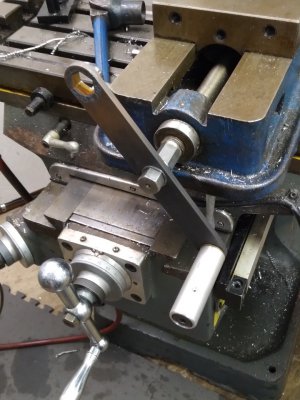For my first lathe project, I decided to make a drawbar wrench/hammer. The head is a 3/4 impact socket. The square drive was bored round and threaded roughly 3/4-16, and I turned a flat, drilled, and tapped the side to accept the handle. The handle is from a bottle jack. I turned a plug, welded it in, and then turned down a threaded end on it. I'm reasonably happy with the result, but it's a little heavier than I'd like.
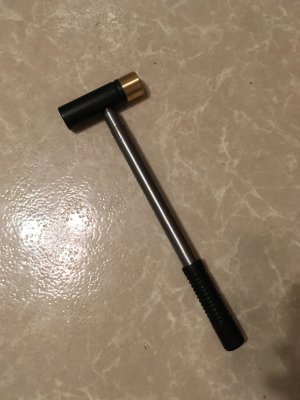
Turns out, sockets are made from tough stuff. (Perhaps this shouldn't have been a surprise.) Some observations along the way:
More pictures. I didn't take a photo of the toolbit, so I modeled the geometry to the best of my recollection.
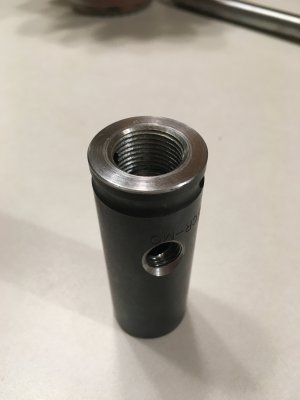
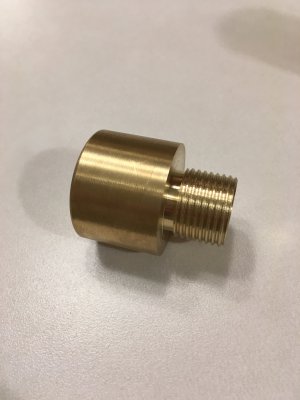
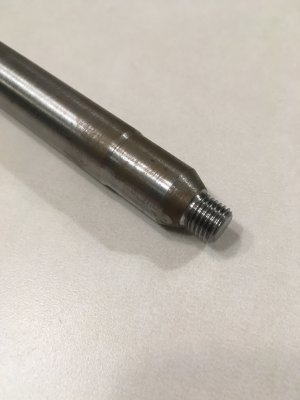
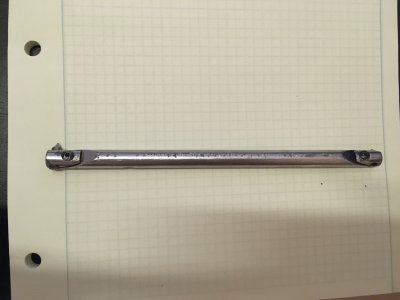
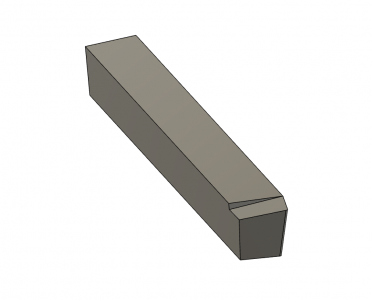

Turns out, sockets are made from tough stuff. (Perhaps this shouldn't have been a surprise.) Some observations along the way:
- Facing the end of the socket was doable, but I had to wind from the inside out and cut with the face of the tool. If I faced inward, the nose would just rub. I made sure the tool was good and sharp, but got similar results each time. It seems like the inside was softer than the jacket, but it could just be cutting geometry.
- I bored the square out with a brazed carbide bar that came with the lathe. that went pretty well, but I didn't push my luck with depth of cut.
- Threading for the hammer face was a challenge. I used the boring bar pictured below, and even with <1" sticking out of the toolholder, there was visible spring in the setup. The finished threads were a little crusty, and an imperfect threadform since the toolbit started to blunt.
- Turning the spotface and drilling for the handle was uneventful, but tapping was a real bear. Granted, it wasn't a quality tap.
- I believe the plug for the handle is 12L14. What a difference! I could turn .050 DOC per side, no problemo! I believe I was running .010/rev.
- Does this all sound normal?
- If I want to machine materials like this in the future, are there ways I can do it? Better HSS toolbit geometry? Do I have to go to carbide for jobs like this?
- Similar to #2, what about single point threading materials like this? Carbide toolbit in my boring bar? Inserts? Or just correct something in my setup?
More pictures. I didn't take a photo of the toolbit, so I modeled the geometry to the best of my recollection.






